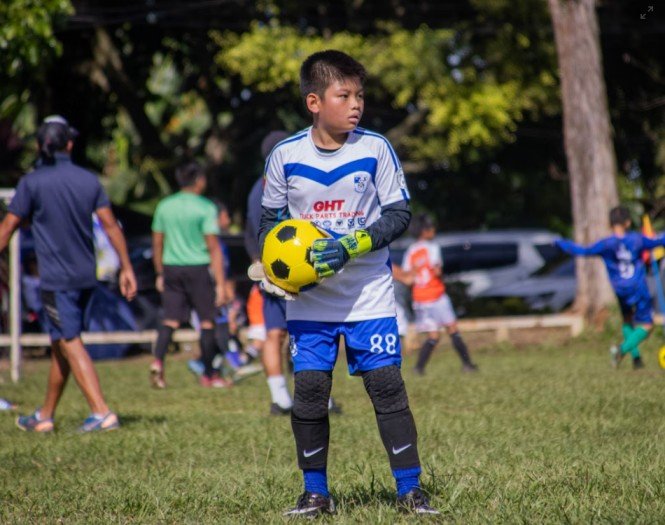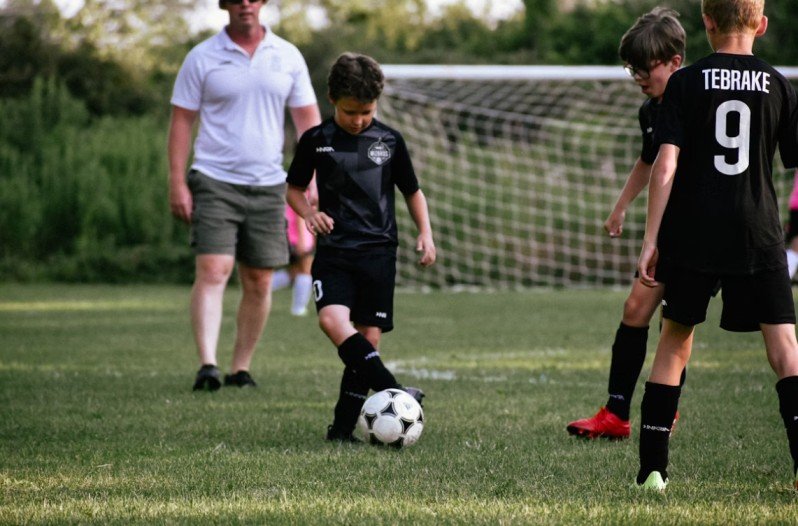Depending on your child’s objectives and degree of dedication, you can choose between leisure and competitive soccer leagues. If your child wants to have fun, learn basic skills, and play in a more relaxed setting, a recreational league is the right choice. A competitive league might be a great option if your child is serious about soccer, wants to improve their talents, and is prepared for a higher level of play.
In short, recreational leagues are for fun and learning, while competitive leagues focus on skill development and competition. This guide explores the differences, benefits, and deciding factors to help you make an informed choice for your young athlete.
What Is Recreational Soccer?

Recreational soccer is designed for players who are new to the game or those who enjoy playing casually for fun and fitness. It focuses on creating an enjoyable experience, allowing players to learn the basics, improve their skills in a relaxed environment, and develop a love for the sport.
- Who it’s for: Recreational soccer is perfect for beginners or players who are not interested in intense competition. It’s ideal for families who want their kids to stay active, have fun, and experience the social aspects of soccer.
- Typical structure: Leagues often operate as house leagues within local communities or schools. These leagues usually have one game per week with weekly practices. There is a strong emphasis on equal playing time, ensuring all players get a chance to participate, regardless of skill level.
- Cost and time commitment: The costs are generally low since recreational leagues are local and typically don’t require extensive travel. The time commitment is also less demanding with fewer practices and games, usually requiring just one or two sessions per week.
What Is Competitive Soccer?

Competitive soccer is for players who are highly motivated, skilled, and have long-term goals of advancing in the sport. Competitive leagues aim to push players to improve their skills and compete at a higher level, often through rep teams or academy programs.
- Who it’s for: Competitive soccer is best suited for children who are already skilled in soccer or have a strong desire to play at a more intense level. This path is ideal for players with aspirations to move on to high school or even college-level soccer.
- Structure: Competitive soccer often involves tryouts to determine skill levels, followed by placement on rep teams or select teams. Teams typically have licensed coaches, and players are expected to commit to multiple practices and tournaments. The focus is on developing technical skills, teamwork, and game strategy.
- Cost and time commitment: The costs can be significantly higher due to travel expenses, tournament fees, and possibly higher league fees. Time commitments are also demanding, with multiple practices per week, weekend games, and travel to tournaments.
Key Differences Between Recreational and Competitive Soccer
Skill Development & Training
- Recreational: Focuses on fun and basic skill development, ensuring players enjoy the game while learning foundational techniques.
- Competitive: Offers more technical, structured training, with an emphasis on advanced skills and player development.
Time Commitment
- Recreational: One practice and one game per week with less overall commitment.
- Competitive: Multiple practices each week, tournaments, and travel. A significant time commitment is required.
Cost Differences
- Recreational: Generally affordable, with lower registration and equipment costs.
- Competitive: Higher fees due to travel, coaching, and tournament costs. A larger financial investment is required.
Coaching & Player Development
- Recreational: Often volunteer-based coaches, with less formal coaching training.
- Competitive: Licensed, professional coaches with experience in developing elite players.
Playing Time & Competition Level
- Recreational: Equal playing time for all players, regardless of skill level. The competition is lower.
- Competitive: Playing time is performance-based, and the competition level is much higher, often against teams from other regions or even states.
Benefits of Recreational Soccer
- Fun, social, and inclusive: Recreational leagues emphasize enjoyment and camaraderie, helping kids make friends and enjoy their time on the field.
- Confidence-building: These leagues allow players to try new things, make mistakes, and grow at their own pace, helping to boost their self-esteem.
- Affordable and accessible: With lower fees and local participation, recreational soccer is an easy and cost-effective way to introduce your child to organized sports.
- Great introduction to organized sports: It’s an ideal starting point for young athletes, helping them understand the rules of the game and the importance of teamwork.
Benefits of Competitive Soccer
- Advanced skill development: Competitive soccer provides specialized training that helps players reach their full potential in the sport.
- Exposure to higher competition levels: Players face tougher opponents, which can motivate them to push themselves further and strive for improvement.
- Opportunities for high school, college, or academy play: Playing at a competitive level can open doors for scholarships and recruitment to higher levels of play.
- Builds discipline, teamwork, and resilience: Competitive players learn the value of hard work, perseverance, and collaboration, both on and off the field.
How Parents Can Decide Between Recreational and Competitive Soccer

Factors to Consider for the Child
- Interest & passion: Does your child enjoy playing soccer for fun, or do they show signs of serious interest in improving their skills?
- Skill level: Is your child already showing advanced skills or potential, or are they just starting out?
- Emotional readiness: Can your child handle the stress of competition and more rigorous training?
- Long-term goals: Does your child have aspirations of playing at the high school or college level?
Family Considerations
- Budget: Competitive soccer can be expensive, so consider the costs before committing.
- Schedule & travel: Competitive soccer requires more time and travel, so ensure it aligns with your family’s lifestyle and availability.
- Parent involvement: Competitive soccer often requires more parental involvement, from attending games to managing logistics.
Transitioning from Rec to Competitive
- Watch for signs that your child is ready for a step up, such as a desire to compete at a higher level or outgrowing their recreational league.
- Prepare them for tryouts by discussing what to expect and maintaining a focus on fun and growth, regardless of the outcome.
Making the Right Choice for Your Child
Ultimately, both recreational and competitive soccer leagues offer valuable experiences. The best choice depends on your child’s personality, goals, and family circumstances. Remember, the most important thing is that your child enjoys the game and continues to grow in a supportive environment.
Conclusion
When choosing between recreational and competitive soccer, it’s essential to weigh your child’s needs and interests carefully. Both paths have their merits, so focus on what will keep your child engaged, excited, and growing both as a player and as a person.
